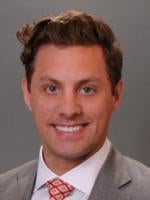Remote Patient Monitoring (RPM) is the next big thing in medical care; patients just don’t know it yet. And, it seems, neither do many physicians. On Thursday, CMS published the final rule on its new RPM codes, officially titled “Chronic Care Remote Physiologic Monitoring.” There are three new RPM codes, all of which will go live starting January 1, 2019. These codes incentivize providers to effectively and efficiently use RPM technology to monitor and manage patient care needs.
Medicare Remote Patient Monitoring Frequently Asked Questions (FAQs)
1. Does Medicare Already Cover Remote Patient Monitoring?
Yes. Even before the new codes, Medicare already offered separate reimbursement for RPM services billed under CPT code 99091. That service is defined as the “collection and interpretation of physiologic data (e.g., ECG, blood pressure, glucose monitoring) digitally stored and/or transmitted by the patient and/or caregiver to the physician or other qualified health care professional, qualified by education, training, licensure/regulation (when applicable) requiring a minimum of 30 minutes of time.” It went live for the first time on January 1, 2018.
2. Why Did CMS Create the New RPM Codes?
While industry advocates generally applauded CMS for activating CPT 99091, they recognized how that code fails to optimally describe how RPM services are furnished using current technology and staffing models. This failure may be due to the fact that CPT 99091 is 16 years old and had never before been a separately payable service. (It is an older code CMS “unbundled” and designated as a separately-payable service.) Indeed, the AMA’s CPT Editorial Panel developed and finalized the three new RPM codes in late 2017. These are the codes CMS finalized effective in 2019. The new codes do a far better job in accurately reflecting contemporary RPM services.
3. What Are the New RPM Codes?
The new Chronic Care Remote Physiologic Monitoring codes are:
- CPT code 99453: “Remote monitoring of physiologic parameter(s) (eg, weight, blood pressure, pulse oximetry, respiratory flow rate), initial; set-up and patient education on use of equipment.”
- CPT code 99454: “Remote monitoring of physiologic parameter(s) (eg, weight, blood pressure, pulse oximetry, respiratory flow rate), initial; device(s) supply with daily recording(s) or programmed alert(s) transmission, each 30 days.”
- CPT code 99457: “Remote physiologic monitoring treatment management services, 20 minutes or more of clinical staff/physician/other qualified healthcare professional time in a calendar month requiring interactive communication with the patient/caregiver during the month.”
4. How Much Time is Required to Bill CPT 99457?
At least 20 minutes per calendar month. This differs from CPT 99091, which requires at least 30 minutes per 30-day period. CPT 99457 is much easier to track because it is based on a calendar month, not 30-day periods. This will more easily align with recordkeeping and claims submission, as CPT 99457is reimbursed on a monthly basis.
5. What Type of Technology Qualifies Under the New RPM Codes?
Many advocates asked CMS to clarify the kinds of technology covered under CPT codes 99453, 99454, and 99457. Some groups gave examples of the kinds of technology they believe these codes should cover, such as software applications that could be integrated into a beneficiary’s smartphone, Holter-Monitors, Fitbits, or artificial intelligence messaging. Other examples included behavioral health data and data from wellness applications, or results of patients’ self-care tasks. Unfortunately, CMS did not offer any specifics in the final rule on what technology qualifies, but CMS does plan to issue forthcoming guidance to help inform practitioners and stakeholders on these issues. This may likely be in the form of a CMS MLN article or Q&A.
6. Who Can Deliver RPM Services?
CPT 99457 allows RPM services to be performed by the physician, qualified healthcare professional, or clinical staff. Clinical staff includes, for example, RNs and medical assistants (subject to state law scope of practice and state law supervision requirements). The inclusion of “clinical staff” is the most significant differentiator from CPT 99091, as that code is limited only to “physicians and qualified health care professionals.” All practitioners must practice in accordance with applicable state law and scope of practice laws. The term “other qualified healthcare professionals” used in CPT 99457 is a defined term, and that definition can be found in the CPT Codebook.
7. Can RPM (CPT 99459) Be Billed “Incident To”? What Supervision Level is Required?
CMS stated that CPT code 99457 describes professional time and “therefore cannot be furnished by auxiliary personnel incident to a practitioner’s professional services.”
This position is notably different from how CMS chose to deal with Chronic Care Management (CCM) services (CPT 99487, 99489, and 99490). For those CCM Services, CMS made an exception allowing incident to billing under general supervision. (“CCM services that are not provided personally by the billing practitioner are provided by clinical staff under the direction of the billing practitioner on an “incident to” basis (as an integral part of services provided by the billing practitioner), subject to applicable State law, licensure, and scope of practice. The clinical staff are either employees or working under contract to the billing practitioner whom Medicare directly pays for CCM.”)
In light of how CMS treated CCM services, it is difficult to understand CMS’ dissimilar treatment of CPT 99457. Like CCM, most RPM services are most efficiently delivered under general supervision, which does not require the physician and auxiliary personnel to be in the same building at the same time, and the physician could instead exert general supervision via telemedicine. This makes a huge difference in operations and business models. We believe CMS should revisit its decision and, instead, allow incident to billing of CPT 99457 under general supervision.
8. Will Medicare Pay for Setting Up the RPM Device and Patient Education?
Yes. CPT 99453 offers separate reimbursement for the initial work associated with onboarding a new patient, setting up the equipment, and patient education on use of the equipment.
9. Must the Patient be in a Rural Area for RPM Reimbursement?
No, the patient need not be located in a rural area or any specific originating site. Providers frustrated with the labyrinthine and narrow Medicare coverage of telehealth services can take comfort in the fact that RPM is not considered a Medicare telehealth service. Instead, like a physician interpretation of an electrocardiogram or radiological image that has been transmitted electronically, RPM services involve the interpretation of medical information without a direct interaction between the practitioner and beneficiary. Medicare pays for RPM services under the same conditions as in-person physicians’ services with no additional requirements regarding permissible originating sites or rural geographies.
10. Can the Patient be at Home for RPM Reimbursement?
Yes, patients can receive RPM services in their homes.
11. Does RPM Require a Face to Face Exam or Interactive Audio-Video?
RPM services to not require the use of interactive audio-video, as these codes are inherently non face-to-face. A few groups urged CMS not to be prescriptive regarding the technology that could be used to perform consultations, including real-time video, a store-and-forward visit, or simply a patient-provider message via a patient portal. CMS expressed sympathy with the desire not to be overly prescriptive about the technology used to furnish RPM services, and stated it CMS defers to the CPT code descriptors and guidance to ascertain the technological modalities used to furnish RPM services.
However, for new patients or patients not seen by the practitioner within one year prior to billing RPM, the practitioner must first conduct a face-to-face visit with the patient (e.g., an annual wellness visit or physical). E/M services levels 2 through 5 (CPT codes 99212 through 99215) should qualify for this face-to-face visit. Transitional care management (TCM) services should also qualify. However, services that do not involve a face-to-face visit by the billing practitioner or which are not separately payable under Medicare (e.g., online services, telephone and other E/M services) would not qualify as an initiating visit.
12. Must the Patient Give Consent to RPM Services?
Yes, the practitioner must get the patient’s consent for RPM services and document it in the patient’s medical record. Although CMS did not directly address this in the final rule for the new codes, it is a requirement for CPT 99091 and can likely be expected as a requirement for CPT codes 99453, 99454, and 99457.
13. Is there a Patient Co-Payment for RPM Services?
Yes, as a Medicare Part B service, the patient is responsible for a 20% co-payment for RPM services. While several groups asked CMS to eliminate any beneficiary co-payment for RPM services, CMS explained that it does not have the authority to change the applicable beneficiary cost sharing for most physician services, including RPM. Providers are cautioned to bill the patient (or the patient’s secondary insurer) for the co-payment, as routine waivers of patient co-payments can present a fraud & abuse risk under the federal Civil Monetary Penalties Law and the Anti-Kickback Statute.
14. Can RPM Also Be Billed with Chronic Care Management (CCM)?
Yes, a provider can bill both CPT 99457 and CPT 99490 in the same month. This is allowed because CMS recognizes the kind of analysis involved in furnishing RPM services is complementary to CCM and other care management services. However, time spent furnishing these services cannot be counted towards the required time for both RPM and CCM codes for a single month (i.e., no double counting). Accordingly, billing both requires at least 40 minutes total (20 minutes of CCM and 20 minutes of RPM).
What to Do Next?
Providers, technology companies, and virtual care entrepreneurs interested in RPM should consider the following steps now to prepare for this new opportunity:
- Take the time to truly understand, with precision, the billing and supervision rules fundamental to a compliant RPM service model. While a proof of concept is wise, providers should not overly focus on the technology and business development issues until they are confident the model they are “selling” or delivering does, in fact, comply with Medicare billing requirements. Otherwise, they (or their customers) could face significant overpayment liability if a Medicare administrative contractor conducts a post-payment audit and finds the claims deficient.
- Develop a model business-to-business RPM contract, whether this contract is technology-only, support services-only, or a combination of both.
- Companies currently offering CCM services should be particularly focused on expanding their business lines into RPM. Not only do CCM companies have current customers who can benefit from RPM services, the non-face-to-face technology and clinical integration requirements are fairly similar. Moreover, CCM and RPM can both be separately billed for the same patient in the same month, allowing additional revenue. Pro tip: you cannot double count the minutes for CCM and RPM, so billing both would require at least 40 minutes per month (20 minutes of CCM and 20 minutes of RPM).
Conclusion
Entrepreneurs and start-ups offering RPM technologies and services should take steps now to understand these new billing opportunities under Medicare. With the new CPT codes for Chronic Care Remote Physiologic Monitoring, RPM will become an area of significant upside potential over the coming years. Hospitals and providers using RPM and non-face-to-face technologies to develop patient population health and care coordination services should take a serious look at these new codes, and keep abreast of developments that can drive recurring revenue and improve the patient care experience.




 />i
/>i
